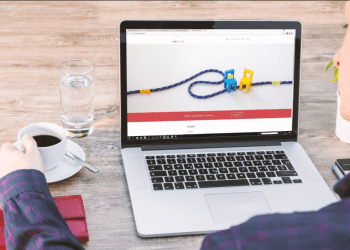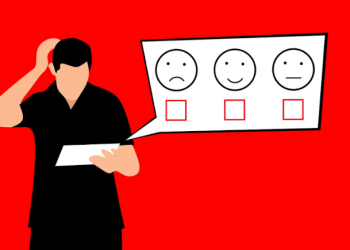The Place of Web Design in Modern Digital Business
Probably there are no more people who think web design is only about the site’s appearance. Today, the task of professional web design is the look and formation of the project so that it would be the most convenient and attractive to users and affect their behavior. Web design is about graphic design, interface design, content, and search engine optimization.
Web design elements include the design of the space so that images and text are placed productively—Color, font, icons, and function buttons matter. The text also carries functionality, so there must be a sound strategy for search engine optimization and user interaction, which is done through cooperation between a designer, an SEO specialist, and a copywriter.
In general, web design is a holistic approach, which directly affects consumer behavior, and therefore affects the company’s performance, conversion rate, and profit.
First Impression
Web design is intended to create the first impression that the user receives during the interaction. The first impression depends on many factors: the structure of the page (layout), colors, indentation, symmetry, the amount of text, fonts, and more. Attractive designs are considered low visual complexity and high prototype. A simple and conventional design will be familiar and user-friendly.
The first impression is influenced by the color scheme, logo, navigation menu, search box, main images on the page, text content, and footer. The appearance of the web resource is the main driving force behind the first impression that affects consumer behavior.
Integrated Activities
UI/UX design pays attention to the color scheme and visual arrangement of elements. Even the way words are arranged on a web page deserves careful consideration. Users should be able to easily find menus, search, and, most importantly, call-to-action buttons. We are talking about the fact that the entire design of the page should guide and intuitively encourage people to click on the button, subscribe, fill out a form, make a purchase, etc.
Superfluous design elements, for the sake of “beauty” rather than for the sake of action, interfere with user behavior management, distracting their attention.
Loading Speed
The loading speed of a site, page or application affects search rankings and shapes visitors’ experience with the site. And the loading speed, in turn, depends on the size and weight of the page elements. That is, the design directly affects how quickly users find a page in a search engine and how long they stay on it.
Increasing Conversion
By website conversion, we mean targeted actions by visitors. This cohort includes not only buying a product but also registration, application, calls, subscriptions, etc.
The most important element has the right CTA button. Its size, location, and content determine whether or not a conversion action will occur.
The right CTA button doesn’t come from inspiration in a designer’s mind. It’s always the result of painstaking work and A/B testing. Designers play with fonts, hover effects, sizes, and call-to-action texts. The logical conclusion of the work on the CTA button will be the correct content of the opened form: it should be simple and understandable.
The Power of Copywriting
The psychology of color and other sacramento web design elements only work in combination with text: a sensible mix of words and design is what guarantees maximum usability and a pleasant user interaction with your site. Text structured and integrated into the design helps users intuitively reach their goals and explains what to do and why, where to click, and what it will lead to, encouraging users to take more active actions.
A person never reads a whole website, so a brief, concise and compelling usability text serves as a driving force. UX copywriting includes creating text for buttons, headlines, notifications, error messages, navigation, user guides, and more. The critical thing to remember here is that all of these texts are part of the design and user experience.
Customer Trust as a Driving Force of Consumer Behavior
Jakob Nielsen has listed four factors that create a trusting relationship with a website:
- design quality,
- transparency of information,
- diverse and relevant content,
- linkage to other sites on the Internet.
A professional and high-quality design is considered to combine well-organized information wrapped in a proper presentation.
Thus, straightforward navigation shows the user that the company has thought about his needs and peculiarities of thinking, and speaks the same language as him. A color scheme corresponding to the type of service or product offered subconsciously influences the customer’s location. Accessible and understandable information and content create a sense of openness and honesty about the company or product. Users prefer those sites that freely talk about all the necessary customer information.
The factors that build trust in a website have been relevant for a long time. Follow them because their absence will raise many customer questions, making the site look suspicious.












